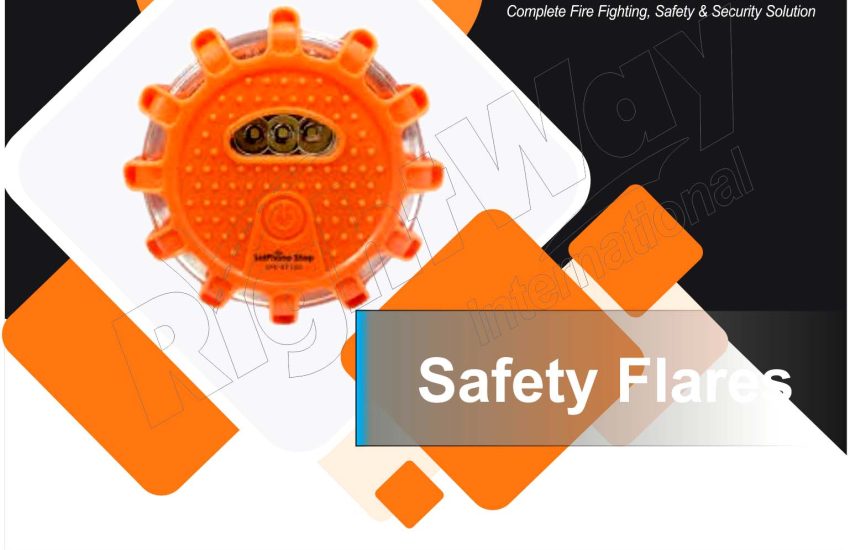Safety flares are crucial safety devices used in various emergency situations and road safety scenarios. Designed to provide high visibility and alert nearby individuals to potential hazards, safety flares are a vital part of any emergency preparedness kit. This article explores the purpose, types, and benefits of safety flares, as well as their applications in different settings.
Purpose of Safety Flares
- Emergency Signaling: Safety flare are used to signal distress or emergency situations. Their bright and often colored flames or lights draw attention and help emergency responders locate the scene.
- Road Safety: On roads and highways, safety flare warn drivers of hazards, such as accidents, roadblocks, or vehicle breakdowns. They help prevent secondary accidents by alerting oncoming traffic to potential dangers.
- Visibility Enhancement: Safety flare increase visibility in low-light conditions, such as nighttime or foggy weather, ensuring that hazards or emergencies are visible from a distance.
- Hazard Marking: They mark dangerous or restricted areas, such as construction zones or accident scenes, to keep people and vehicles away from potentially hazardous areas.
Types of Safety Flares
- Traditional Pyrotechnic Flares: These are chemical flares that burn brightly to produce a high-intensity light. They are often used in roadside emergencies and maritime situations. They come in different colors, such as red or orange, to increase visibility.
- Electronic Flares: Utilizing LED technology, electronic flares are reusable and provide a steady or flashing light. They are often equipped with multiple light modes and are more durable and weather-resistant compared to traditional flares.
- Reflective Flares: These flares use reflective materials to enhance visibility when illuminated by headlights or other light sources. They are typically used in conjunction with other types of safety flare for increased effectiveness.
- Solar-Powered Flares: Solar-powered flares use solar energy to charge during the day and provide illumination at night. They are environmentally friendly and ideal for long-term use in emergency preparedness kits.
- Chemical Light Sticks: While not traditional flares, chemical light sticks provide a similar function by emitting light through a chemical reaction. They are often used in situations where an open flame is not desirable.
Benefits of Safety Flares
- Enhanced Safety: Safety flare help prevent accidents and injuries by alerting individuals to hazards or emergency situations. Their bright light makes it easier for drivers and pedestrians to see and avoid potential dangers.
- High Visibility: The intense light produced by safety flare ensures high visibility, even in poor weather conditions or low-light environments. This is crucial for effective emergency signaling and hazard marking.
- Durability and Reliability: Modern safety flare, especially electronic and solar-powered types, are designed to be durable and reliable in various environmental conditions, ensuring they perform when needed.
- Ease of Use: Safety flare are generally easy to deploy and use, making them accessible tools for individuals in emergency situations. Traditional flares light quickly, while electronic and solar-powered flares can be activated with the push of a button.
- Environmentally Friendly Options: Solar-powered and electronic flares offer environmentally friendly alternatives to traditional chemical flares, reducing waste and environmental impact.
Applications of Safety Flares
- Roadside Emergencies: Safety flare are commonly used in roadside emergencies, such as vehicle breakdowns or accidents, to alert passing drivers and prevent further collisions.
- Maritime Safety: On boats and ships, safety flare are used to signal distress and attract the attention of rescue teams. They are an essential part of maritime safety equipment.
- Construction Sites: At construction sites, safety flare mark hazardous areas, ensuring that workers and passersby are aware of potential dangers and restricted zones.
- Emergency Preparedness: Safety flare are a key component of emergency preparedness kits for both individuals and organizations. They help ensure that people are equipped to handle various types of emergencies.
- Public Events: During public events or outdoor gatherings, safety flare can be used to manage crowd flow, mark restricted areas, and ensure overall safety.
Conclusion
Safety flares are indispensable tools for enhancing visibility and safety in a wide range of situations. From roadside emergencies to maritime distress signaling, their ability to alert and inform makes them a vital part of emergency preparedness and safety protocols. By understanding the different types and benefits of safety flare, individuals and organizations can better prepare for emergencies and ensure safer environments for all.


